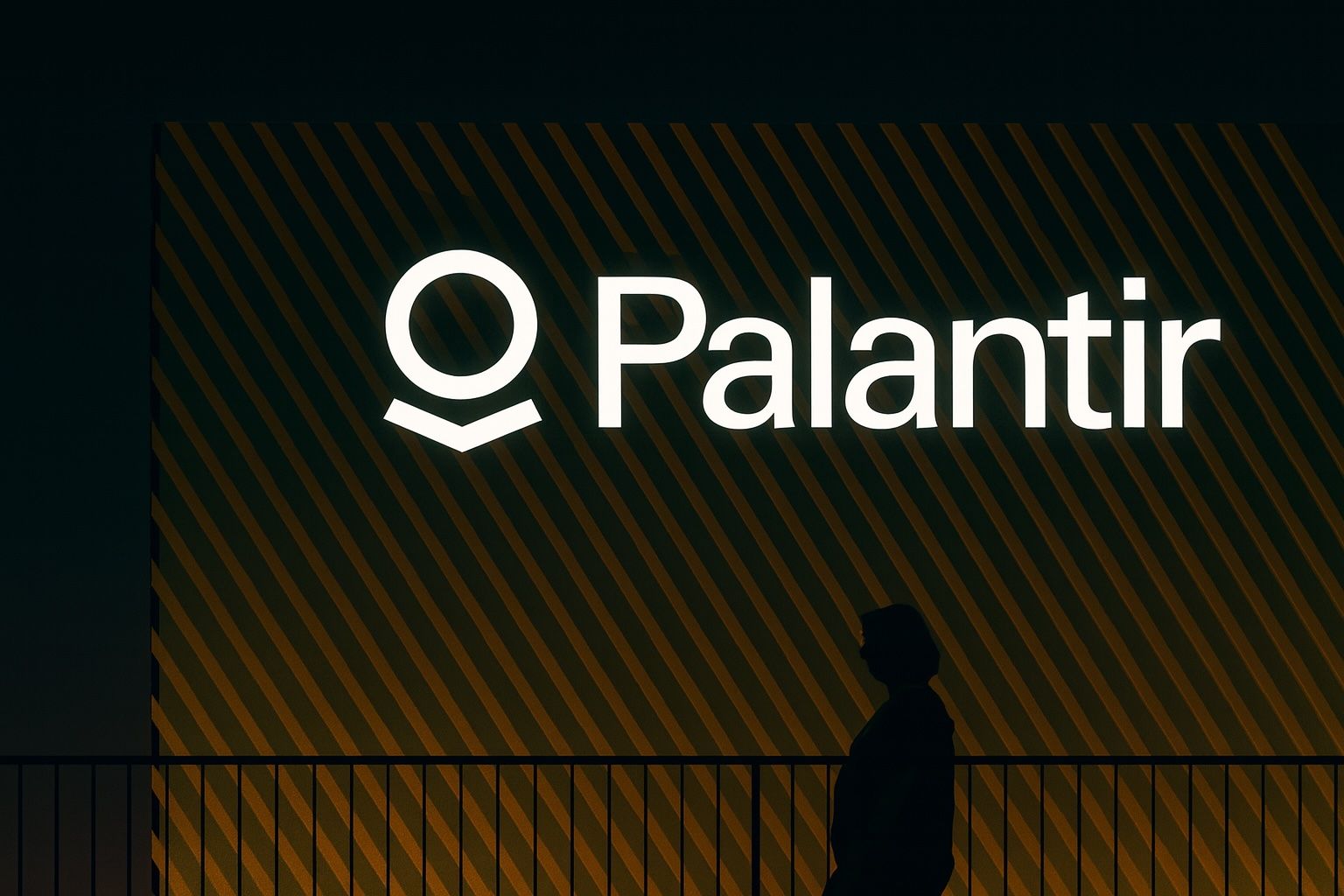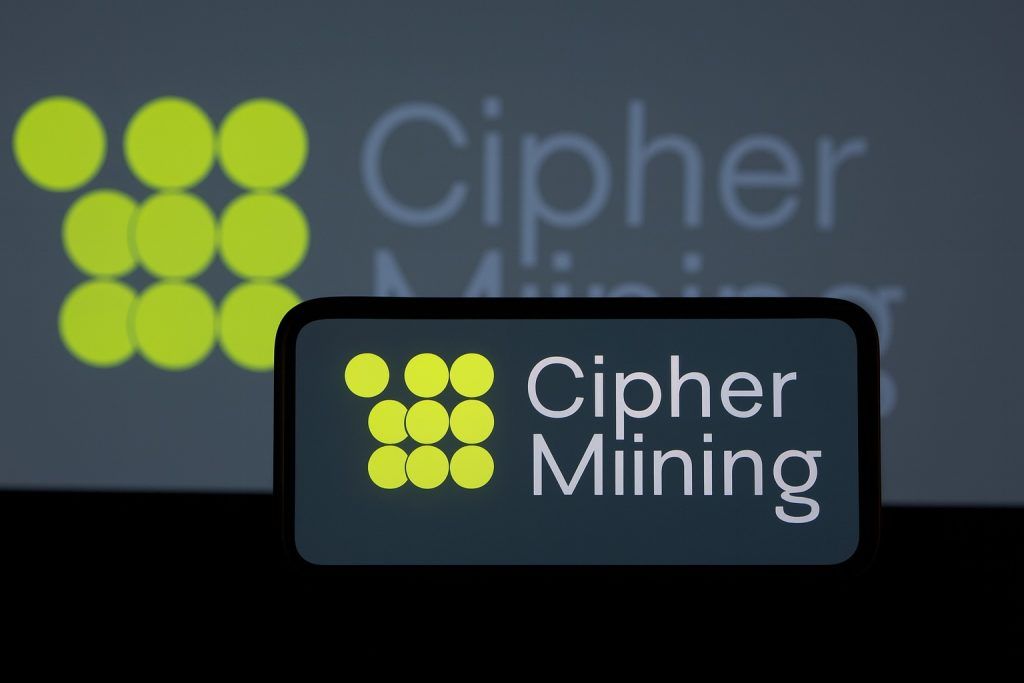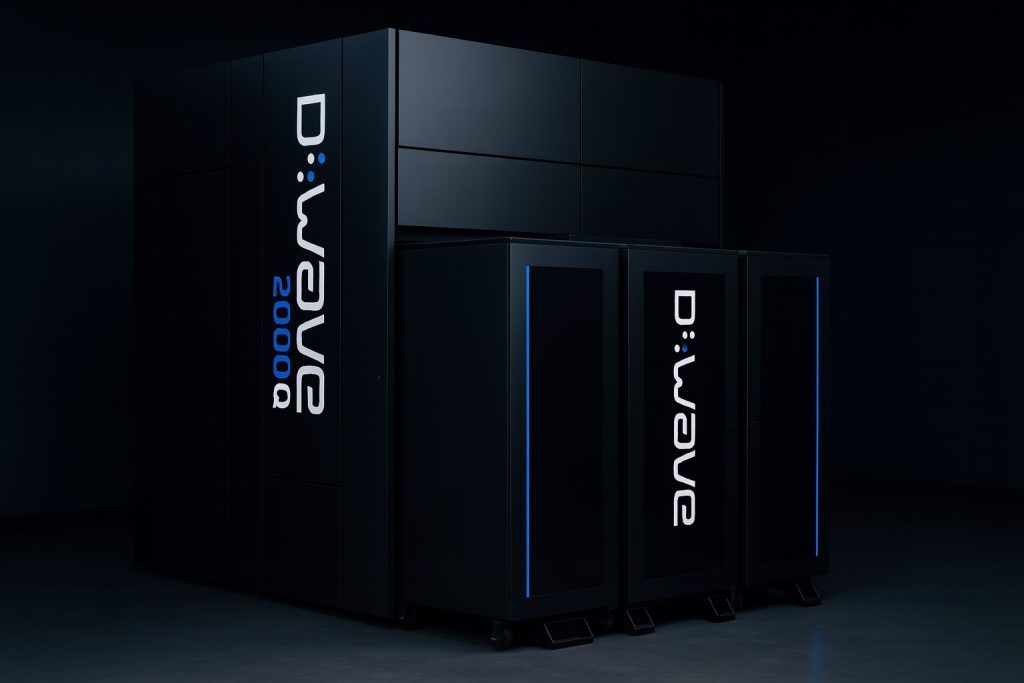- Stock soars: Palantir (NYSE: PLTR) has rocketed roughly 300% in 2025, recently trading around $173–$180 per share (≈$400 billion market cap) [1]. It’s among 2025’s top performers on the S&P 500, and has climbed over 600% in the past three years [2].
- Major deals: The company scored blockbuster contracts this year – from a $10 billion U.S. Army deal to a £1.5 billion UK AI-defense partnership – plus a new Boeing AI tie-up, fueling optimism for Palantir’s government and commercial business [3] [4].
- AI demand boom: Palantir’s latest earnings smashed records with Q2 2025 revenue topping $1 billion (+48% YoY). Management hiked full-year guidance to ~$4.15 billion amid surging demand for its AI platforms [5]. Both government and enterprise sales are rising sharply, as organizations adopt Palantir’s artificial intelligence tools.
- Experts divided: Tech bulls tout Palantir as a core AI winner – Wedbush predicts a possible $1 trillion valuation within years [6] – while skeptics warn its valuation (over 100× sales or 200× earnings) is “difficult to justify” at current levels [7] [8]. The stock’s consensus rating is Hold with 12-month targets around $130 [9], reflecting both huge growth hopes and caution.
- From spy tech to mainstream: Founded to serve U.S. spy agencies, Palantir now straddles defense and enterprise tech. Its software powers military intelligence for the Pentagon and NATO [10] [11], while also helping Fortune 500 companies manage data with AI [12]. This unique position as an “AI defense” player underpins its dramatic rise – and the debate over its future.
Red-Hot Stock Rally Powered by AI
Palantir’s stock has been on a tear in 2025, transforming the once-stealthy software firm into one of the market’s hottest names. Shares have nearly quadrupled year-to-date, vastly outperforming both tech and defense peers [13]. As of October 22, Palantir traded around $173 (just shy of recent highs around $182 earlier in the week), and it has roughly doubled in 2025 alone [14]. This red-hot run makes Palantir one of the top S&P 500 gainers of the year. Over a three-year span, the stock has now surged over 600% [15], reflecting investors’ fervor for anything related to artificial intelligence.
What’s driving the rally? In a word: AI. Palantir, known for its data analytics platforms, has positioned itself as an AI powerhouse at an ideal time. The stock’s momentum accelerated after the company reported blowout earnings and raised forecasts on the back of soaring demand for its AI-driven services [16]. In August, Palantir announced its first-ever $1 billion quarter of revenue and said it would beat prior sales projections for the year [17]. That news sent shares up nearly 8% in a day to record highs around $173 [18], and triggered a wave of Wall Street optimism. Overall, Palantir’s stock has been “boosted by the company’s increasing business with the federal government and surging enterprise demand for its AI-powered tools.” [19]
Investors have also piled in thanks to Palantir’s growing profile in the AI gold rush. The company is often mentioned alongside giants like Nvidia as a prime beneficiary of the AI boom. Notably, retail traders have joined the frenzy – pouring over $1.2 billion into Palantir shares in a single month (July) as excitement peaked [20]. This fervent sentiment, at times bordering on “meme stock” enthusiasm, helped propel Palantir’s market capitalization to roughly $400 billion by late 2025 [21] – an astonishing figure for a firm with just $4 billion in annual revenue.
Market watchers caution that such a meteoric rise can bring volatility. Palantir’s rally has seen a few sharp swings on headlines. For instance, in early October its stock briefly slid about 7% in one day after reports of an Army test revealing security flaws in a prototype system [22]. Yet each pullback so far has been shallow and short-lived, as dip-buyers step in on continued optimism. As one analyst put it, Palantir’s run “exemplifies the AI-driven boom” of 2025 [23] – with all the euphoria and risks that implies.
Big Contracts Fueling Growth
Palantir’s fundamentals have increasingly justified some of the hype. The company has landed a string of major contracts and partnerships in recent months, reinforcing its revenue growth trajectory. Chief among them was a colossal U.S. Army contract announced in late July. The Army decided to consolidate dozens of separate programs into a single enterprise agreement with Palantir – giving it the option to spend up to $10 billion over 10 years on Palantir’s technology [24] [25]. While this umbrella deal doesn’t guarantee $10 billion in orders, it’s a powerful signal of the Pentagon’s deepening reliance on Palantir’s platforms. The news marked Palantir’s largest-ever contract and sent a clear message that its software is becoming core infrastructure for U.S. defense [26].
Across the Atlantic, Palantir scored a landmark partnership with the UK government as well. In mid-September, the UK Ministry of Defence inked a strategic deal valued at up to £1.5 billion to adopt Palantir’s data and AI systems across British defense and security agencies [27]. This package included a direct £750 million contract – Palantir’s biggest UK award to date – to deploy its platforms for the UK armed forces [28]. London will also host Palantir’s new European HQ as part of the agreement. UK officials hailed the alliance as a “major vote of confidence” in using Palantir’s tech to modernize military decision-making [29]. For Palantir, the deal not only brings significant revenue but also solidifies its foothold among NATO allies, showcasing its expanding global defense presence.
In the private sector, Palantir is making inroads with marquee partners as well. Notably, Boeing’s Defense & Space division announced a tie-up with Palantir this fall, aiming to integrate Palantir’s AI-driven data platform into Boeing’s aircraft and satellite production lines. Boeing’s defense chief called the partnership “game-changing,” saying Palantir’s software will let engineers make decisions “not in weeks, but in days and hours” by synthesizing data quickly [30] [31]. Palantir’s stock jumped ~2% on the Boeing news, as investors saw it as validation of Palantir’s value to major industrial firms. Beyond Boeing, Palantir’s Foundry software has won praise from companies like Hertz, United Airlines, and Walgreens, which use it to streamline operations with AI [32]. These deals underscore how Palantir is broadening its reach from purely government work to becoming a go-to provider of AI solutions in industries ranging from aviation to healthcare.
Palantir’s financial results reflect this wave of new business. In Q2 2025, the company’s revenue leapt 48% year-on-year to $1.03 billion, its fastest growth as a public company [33]. That quarter marked Palantir’s first time exceeding $1 billion in sales in a single quarter [34] – a milestone driven by both U.S. government contracts (sales up 53%) and booming commercial demand. Palantir’s CEO Alex Karp highlighted “the astonishing impact of AI” in driving adoption, noting the commercial segment nearly doubled from the year prior [35]. Off the strong results, Palantir raised its full-year 2025 revenue forecast to ~$4.14–4.15 billion (about +45% YoY) [36], up from ~$3.9 billion previously. This guidance hike – the second boost this year – signals confidence that big contracts and new customers will keep the growth engine humming. Analysts noted that Palantir’s “accelerants on both sides” – its government and enterprise units – are now firing in tandem [37], an encouraging sign for sustained momentum.
Sky-High Valuation Meets Expert Skepticism
While Palantir’s growth story is compelling, its valuation has become a hot debate on Wall Street. The stock’s massive run-up has stretched traditional metrics to extreme levels, prompting some experts to urge caution. Palantir shares currently trade at well over 100 times sales and more than 200 times forward earnings, making it arguably the most richly valued stock in the S&P 500 [38] [39]. (For comparison, even high-flying NVIDIA trades around 35× forward earnings [40].) “Despite the company having robust competitive advantages… we believe this is turning into a difficult-to-justify valuation story,” warned analysts at Morningstar, noting Palantir’s fundamentals may not support such a premium indefinitely [41].
Skeptics also point out that a great deal of future success is already “priced in”. Palantir’s market cap near $400 billion implies investors expect years of blistering growth ahead. Indeed, by one estimate, Palantir would need to grow revenue ~35% annually through 2030 just to reduce its price-to-sales multiple down to more typical high-growth levels [42]. Any stumble or slowdown could trigger a sharp re-rating of the stock. Short-seller Andrew Left of Citron Research has famously labeled Palantir “absurdly overvalued,” arguing its realistic worth should be a fraction of the current price (he suggested around $65–$70 per share) [43]. In August, a critical Citron report briefly sent social media sentiment into a tailspin [44], though Palantir’s uptrend ultimately continued. Even some long-term bulls concede that Palantir’s perfection-priced stock leaves no margin for error in execution going forward.
On the other hand, bullish analysts insist the rally is justified – and may have further to run. Wedbush Securities, one of the earliest proponents, has called Palantir “one of the best AI stocks investors can own” [45]. Wedbush’s Dan Ives argues the AI revolution is in its early innings (“it’s now 10:00 p.m. of a party that goes to 4:00 a.m.” he quipped) and that Palantir stands to be a long-term AI winner [46]. The firm expects Palantir’s market capitalization could hit $1 trillion within the next few years as AI adoption accelerates [47] – roughly triple the current value. Likewise, Bank of America recently reiterated a “Buy” rating with a Street-high $215 price target for Palantir stock [48], seeing considerable upside from today’s ~$170 level. Overall, price targets among analysts span a wide range – from as low as ~$45 up to that $215 bull case [49] – reflecting the uncertainty around Palantir’s valuation. The average 12-month target is in the $125–$140 zone [50], which suggests modest downside or a mostly flat outlook. That lukewarm consensus underscores how polarizing Palantir has become: bulls see a transformational growth story in AI and defense, while bears see an overhyped stock priced for perfection.
From Defense Spy Tech to Enterprise AI Leader
Palantir’s remarkable trajectory cannot be separated from its unique origins. The company was founded in 2003 with backing from Peter Thiel and early work for U.S. intelligence agencies. For years, Palantir was a secretive provider of data-mining software to the CIA, FBI, and military, helping track terrorists and uncover insurgent networks. Its flagship Gotham platform was deployed in war zones like Afghanistan over a decade ago, assisting the U.S. Army in identifying roadside bomb threats [51]. This deep defense pedigree – and close ties to Washington – set Palantir apart from typical Silicon Valley startups. CEO Alex Karp (an academic-turned-entrepreneur) often stresses that Palantir’s mission is to empower Western governments with cutting-edge tech. Indeed, Palantir has become the U.S. Army’s “supplier of choice” for AI-driven battle management software [52]. The company is the prime contractor on nine major Army programs of record [53], ranging from intelligence systems to the high-profile Project Maven.
Maven, an AI program born in the Pentagon, exemplifies Palantir’s central role in modern defense. The system ingests and analyzes a deluge of battlefield data – from drone footage to sensor readings – to give commanders a real-time picture of operations [54]. Palantir helped develop and expand Maven, recently securing a $1.3 billion contract to enhance the “Maven Smart Systems” platform [55]. In fact, NATO itself signed on to use Palantir’s Maven-powered technology in 2025: for at least the next five years, Palantir will serve as the core data backbone for all 32 NATO member nations’ militaries [56]. This is a striking validation of Palantir’s software on the world stage. It suggests that opting out of Palantir’s ecosystem could become “increasingly costly and inconvenient” for U.S. allies in the future [57]. Palantir’s ambition is not just to sell tools, but to become a de facto military operating system for the West – an objective that legacy defense contractors can only envy [58] [59].
At the same time, Palantir has been reinventing itself as an enterprise software player. No longer content with government work alone, the firm has aggressively expanded into commercial industries over the past few years. Its Foundry platform – essentially an AI-driven operating system for data – is now used by clients in finance, healthcare, manufacturing, energy and more. Corporate customers like Hertz, United Airlines, and Walgreens have publicly praised Palantir’s tools for improving business decisions through data integration [60]. Palantir’s leadership claims the commercial total addressable market is enormous, and they’re backing that up with investment. Karp has projected that Palantir’s non-government revenue could grow tenfold by 2030, which implies ~60% compound annual growth [61]. In the most recent quarter, U.S. commercial sales already jumped 93% year-on-year [62] – evidence that Palantir’s strategy of targeting large enterprises is bearing fruit. Recent projects range from a partnership to build an AI “nuclear operating system” for a nuclear energy company [63], to deploying Foundry at global automakers and banks. Palantir often uses a “land and expand” approach: win an initial project with a big client, then grow the account by demonstrating value. This model has started to turn Palantir into a key vendor for Fortune 500 firms’ AI initiatives, not just a Beltway contractor.
Crucially, Palantir’s dual focus on defense and enterprise AI gives it a diversified growth engine – but also a complex identity. It sits at the crossroads of Silicon Valley and the Pentagon. This means Palantir competes with both government contractors (like Lockheed Martin or newer defense tech firms such as Anduril) and with enterprise software rivals (from AI startups to giants like Snowflake in data cloud services). For example, Palantir is often compared to C3.ai as a pure-play AI software stock; yet while C3.ai struggled with growth this year, Palantir’s entrenched projects and “sticky” deployment teams enabled far stronger results [64] [65]. Compared to cloud data firms, Palantir’s revenue is less recurring and more tied to big contracts, but its integration into customers’ operations can make it indispensable. This unique positioning – part mission-critical contractor, part cutting-edge tech firm – underlies Palantir’s stock appeal as well as its controversy. It’s essentially pioneering a new category of “AI platform” company serving both national security and business intelligence needs.
Outlook: Riding High Into Earnings
Looking ahead, Palantir faces both significant upside catalysts and challenges as it tries to sustain its momentum. In the near term, all eyes are on the company’s upcoming Q3 2025 earnings report, due November 3. Investors will be watching to see if Palantir can extend its streak of accelerating growth. The firm’s own guidance implies Q3 revenue above ~$1.08 billion [66], which would be another record quarter. Any beats (or misses) on these expectations could sway the stock, especially given its recent volatility around news. Palantir’s pattern this year suggests the stock could be turbulent around earnings – big surprises have triggered jumps, while any hints of slowdown (or even high expenses) might spook the market.
Beyond one quarter, Palantir’s long-term narrative is still being written. Bulls believe the current investments – hiring top AI talent, pouring money into R&D, and absorbing short-term costs – will pay off in a sustainable lead in AI software. The company continues to release new features (for example, an “AIP Evals” toolkit to help customers test AI models was rolled out in September [67]) and to iterate its products to stay ahead of rivals. CEO Alex Karp has signaled he’s willing to sacrifice near-term profitability to capture the massive opportunities in AI across industries [68]. With a hefty war chest (Palantir is generating over $1 billion in free cash flow annually [69]) and no debt, the company is well-positioned to invest in its growth ambitions.
However, risks loom. Palantir’s valuation leaves little room for disappointment – any sign of growth deceleration or contract loss could trigger a sharp sell-off. Geopolitical and regulatory uncertainties also linger, given Palantir’s deep involvement in government data programs. If political winds shift or if corporate clients pull back spending on AI in a downturn, Palantir would be tested. Furthermore, competition in the AI and big-data analytics space is intensifying, from cloud giants to upstart AI vendors, which means Palantir must continue proving its superior value to customers.
For now, though, Palantir enjoys a rarefied position. It has the wind at its back from historic government deals, rapid revenue growth, and an AI zeitgeist that plays directly to its strengths. The stock’s stunning 2025 rally reflects investors betting that Palantir will become an indispensable pillar of both national defense and corporate AI strategies in the years ahead. Whether that bold vision comes to fruition – potentially making Palantir one of the world’s tech titans – or whether the current hype cools off, will depend on the company’s execution in delivering on its promises. As one analyst noted, Palantir’s “staggering growth is showing no signs of slowing” for now [70] [71], keeping supporters optimistic that this controversial, category-defining company may just grow into its sky-high valuation.
Sources: Financial news reports from Reuters, Investopedia, TechStock² (ts2.tech) and others [72] [73] [74] [75], official earnings data, and expert commentary [76] [77] as of Oct. 22, 2025.
References
1. ts2.tech, 2. www.reuters.com, 3. ts2.tech, 4. ts2.tech, 5. ts2.tech, 6. www.reuters.com, 7. ts2.tech, 8. www.reuters.com, 9. ts2.tech, 10. www.reuters.com, 11. www.reuters.com, 12. www.reuters.com, 13. www.reuters.com, 14. www.reuters.com, 15. www.reuters.com, 16. www.investopedia.com, 17. www.investopedia.com, 18. www.investopedia.com, 19. www.investopedia.com, 20. www.reuters.com, 21. ts2.tech, 22. ts2.tech, 23. ts2.tech, 24. ts2.tech, 25. www.reuters.com, 26. www.reuters.com, 27. ts2.tech, 28. ts2.tech, 29. ts2.tech, 30. ts2.tech, 31. ts2.tech, 32. www.reuters.com, 33. ts2.tech, 34. www.investopedia.com, 35. www.investopedia.com, 36. ts2.tech, 37. ts2.tech, 38. ts2.tech, 39. www.reuters.com, 40. www.reuters.com, 41. www.reuters.com, 42. www.reuters.com, 43. ts2.tech, 44. ts2.tech, 45. ts2.tech, 46. ts2.tech, 47. www.reuters.com, 48. ts2.tech, 49. ts2.tech, 50. ts2.tech, 51. www.reuters.com, 52. www.reuters.com, 53. www.reuters.com, 54. www.reuters.com, 55. www.reuters.com, 56. www.reuters.com, 57. www.reuters.com, 58. www.reuters.com, 59. www.reuters.com, 60. www.reuters.com, 61. www.reuters.com, 62. www.reuters.com, 63. ts2.tech, 64. ts2.tech, 65. ts2.tech, 66. ts2.tech, 67. ts2.tech, 68. ts2.tech, 69. www.tradealgo.com, 70. www.reuters.com, 71. www.reuters.com, 72. www.reuters.com, 73. www.investopedia.com, 74. ts2.tech, 75. ts2.tech, 76. www.reuters.com, 77. ts2.tech








